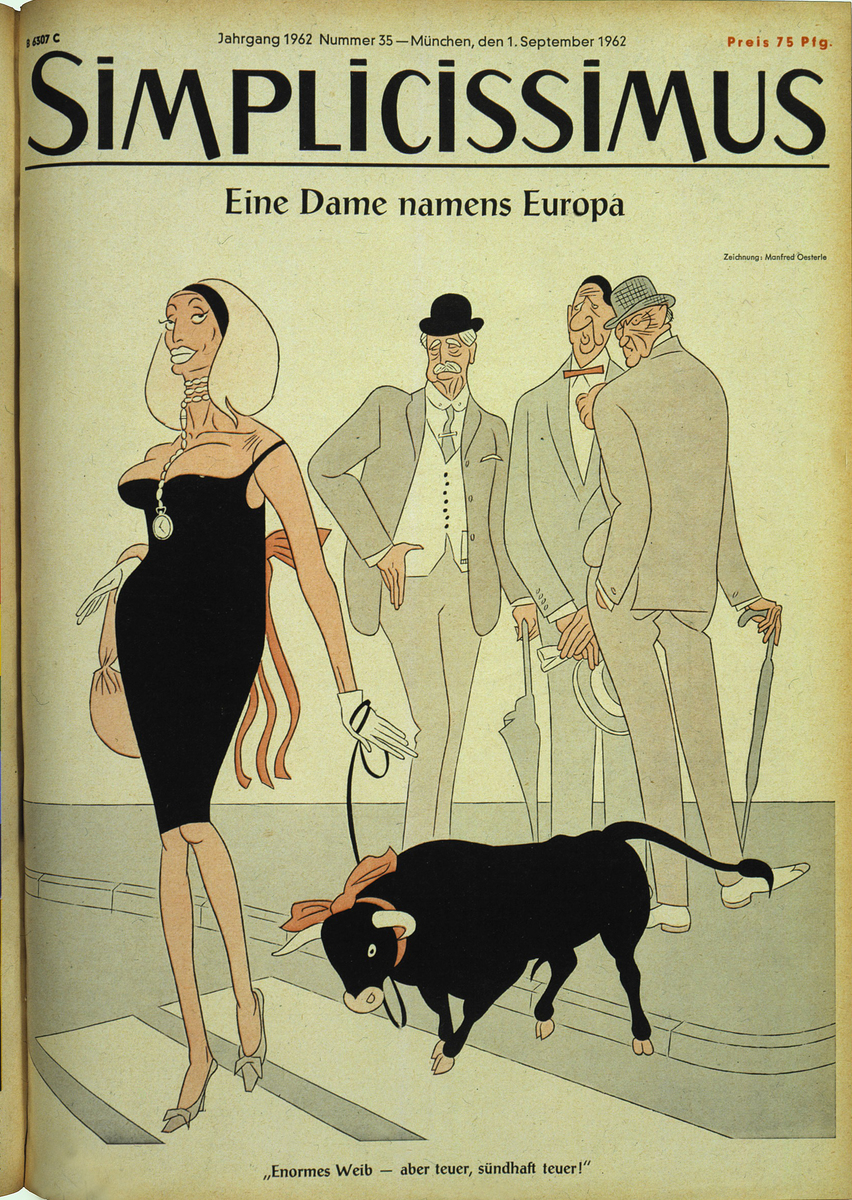Abstract
This cartoon from the September 1, 1962, issue of the magazine
Simplicissimus plays on the Greek
myth of Europa and Zeus. In the myth, the beautiful Europa is kidnapped
by the god Zeus (in the form of a bull) and taken to Crete. Here,
“Europa” is depicted as a sophisticated, voluptuous woman leading a tame
bull on a leash. British Prime Minister Harold Macmillan (left), French
president Charles de Gaulle (middle), and German chancellor Konrad
Adenauer (right) watch her as she saunters by. The caption (“Tremendous
dame—but expensive, sinfully expensive!”) suggests that the process of
European integration not only involved protracted negotiations but also
high costs. Published right before de Gaulles’ state visit to the
Federal Republic (September 4–9, 1962), the cartoon also alludes to the
differing national interests that arose with respect to further steps
toward European integration. De Gaulle aimed for an intergovernmental
“Europe of fatherlands” that excluded Great Britain; according to his
conception, the six EEC member states (the Federal Republic of Germany,
France, Italy, and the Benelux States) needed to increase their level of
political cooperation to form a counterweight to the economic power of
the U.S. and the USSR. Great Britain, for whom the economic advantages
of EEC membership were paramount, had officially requested admission to
the EEC on August 9, 1961. The Federal Republic aimed for a greater
degree of supranational political integration and wanted Great Britain
to be included in this process. Cartoon by Manfred Oesterle.
